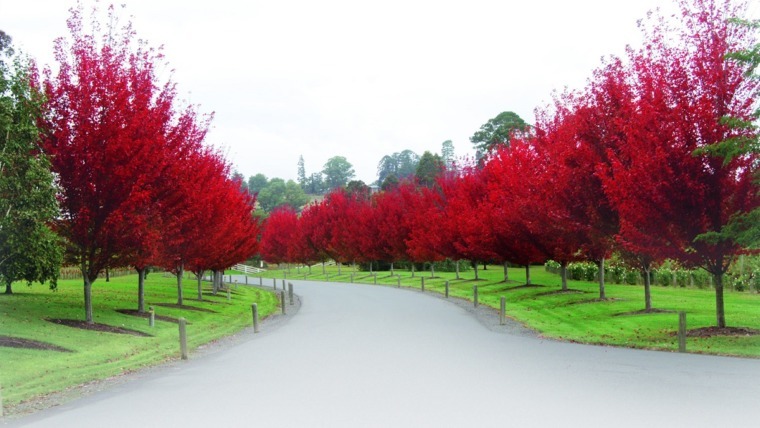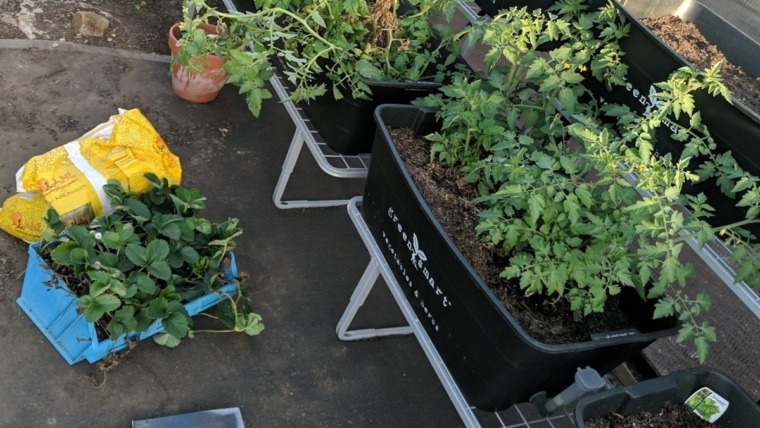
Composting & Worms
Written by Melanie Notaras of My School Adventure
You might think handling your rotten food scraps is disgusting, but imagine a world where our biological waste doesn’t decompose … it would be piled up around us, everywhere! I love recycling my own food waste because it adds to my self-sufficiency (doing my part to reduce landfill), it’s a valuable garden resource, I don’t have to put my general bin out for collection or clean it as often, and I’m often surprised with delicious edibles from the waste – right now we’re gorging on self-seeded papayas, tomatoes and capsicums.
How I recycle our food waste depends on whether I just want to get rid of it, prepare a new garden bed, create liquid fertiliser for existing plants, or if I’m feeling sick. Currently I use direct burial, worm farming and a rotating compost bin.

My favourite and usual method is to bury my food scraps straight into a spare patch of dirt. With moisture, bacteria, worms and other organisms able to attack it from all sides, cocooned in a stable temperature environment (by the insulating properties of the surrounding soil) decomposition is very fast and can keep up with our huge food waste requirements – about a five litre bucket of scraps a day. I don’t need to dig up the whole garden. I only dig in vacant patches where I’m planning to plant my next batch of veggies, and because decomposition is so fast I can reuse the same hole in 3 weeks’ (summer) to 6 weeks’ (winter) time. I usually rebury in the same spot several times to enrich the soil as much as possible, as well as to conserve space. Then I plant it up! Some hard food like bones, avocado seeds or eggshells take longer to disappear, but they’re usually ‘dry’ rather than rotten the next time you dig them up – so not too yucky. Recently I’ve been pulverising my (dried) eggshells in the kitchen blender before burying and this makes them disappear straight away!
We’re a family of four, and I have a 20L nappy bucket with a clip-on lid that collects our food scraps until it’s time to dig. I used to keep it inside, but after a nasty fruit fly infestation one summer it’s now on the patio. Now we put our scraps into a small 5L bucket (with lid) in the kitchen and tip the contents each night into the outside bucket. With a bit of decomposition starting in the bucket and a bit of squashing down, I can usually get away with only burying the food scraps once a week.
There’s an art to burying food and it only takes five minutes. I grab my spade and dig a hole about twice the size of the bucket of food I’m burying. Next, I tip the food scraps in. Scoop a couple of spades of earth on top and toss the earth and food scraps together so that they’re all covered in dirt – like tossing a salad. Then I chop the food scraps roughly with the end of my spade into smaller pieces, especially any whole fruit. The smaller the pieces, the more entry points possible to let microorganisms in.
The trick is to chop and mix the scraps, covering all surfaces with dirt. Squashing the scraps down or simply burying without mixing squeezes the air out and stops aerobic (air-breathing) microorganisms getting in – these are the good guys who do the speedy work. Anaerobic decomposition creates stinky sludge that can take months (versus weeks) to disappear.
Once the scraps look lovely and dirty, I top it with about 15 centimetres of dirt as a lid. That’s enough to stop the rats in my neighbourhood from smelling the food and give me a quick cardio workout. Finally I rinse out my bucket under the garden tap and tip the dirty, nutrient-rich water onto my vegetables.

Worms
The worm farm is my second favourite. Every week I chop up a plate of scraps into tiny pieces and scrape them onto the top of the worm farm. It’s nowhere near able to keep up with our food disposal requirements, but it’s small, squeezing easily into a corner of my garden. I keep the worm farm because worms break the food down into a fantastic liquid fertiliser (wee) that can be drained, diluted and poured onto plants; or the castings (worm poo – it’s more like rich, good smelling sludge) can be scooped out every few months and mixed into the potting mix. Plants love it!
Compost Bins
I have a rotating compost bin, which is more my emergency go-to. Food takes several months to decompose and it requires more maintenance (a solid structure of sticks and dry leaves, plus turning the pile to keep it aerated). It will eventually turn into a nice crumbly mix, but a lot of the fertilising liquid gets lost. A bin takes up a large space (allow also for the swing of the bin), but if I’m too sick to dig a hole, it’s raining or I’m in real hurry to go somewhere, it’s better than losing my valuable food scraps to the landfill bin.
Composting & Worms Composting & Worms Composting & Worms Composting & Worms



